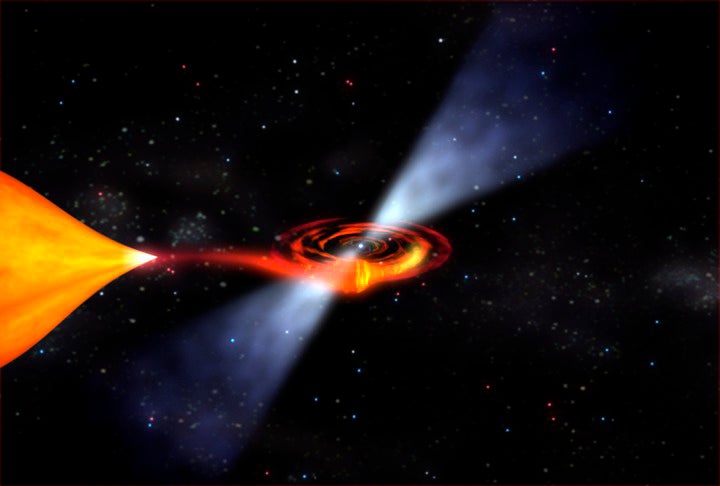
Some stellar objects spin hundreds of times per second. What mechanism initializes this phenomenon and how is it maintained with such precision over long periods of time?
Steve Weirich
Portland, Oregon
The first part of your question — how stellar objects reach millisecond spin periods — involves two concepts. First, the object needs to be small, since no material can move faster than the speed of light. Consider a point on the equator of a rapidly spinning object. In a millisecond, it travels once around, or about 6.3 times the radius. For that point to move at sub-light-speed, the radius must be less than 30 miles (48 kilometers).
Second, the object must be dense with strong surface gravity, since gravity generally holds astrophysical objects together. Without strong equatorial gravity, the object would simply fly apart if it spins too fast. Of stellar-mass objects, only neutron stars and black holes can satisfy those requirements. Among white dwarfs, which are less dense than a neutron star or black hole, the fastest spin period is about a second. Other hypothesized objects (e.g., quark stars) might satisfy these constraints, but there is little evidence they exist.
How do astrophysical objects start spinning so fast? On paper, it can happen as a slowly spinning star collapses to a neutron star or black hole; its spin speeds up due to conservation of angular momentum, like an ice skater pulling in their arms during a spin to twirl faster. But in practice, it seems that it usually takes accretion of additional matter to reach millisecond periods. Imagine a star orbiting a neutron star or black hole, transferring matter through an accretion disk. The disk material rotates faster and faster as it heads in toward the neutron star/black hole. As the material drops down the last bit, it adds its angular momentum to the neutron star/black hole, spinning it up. Adding a total of about a tenth of a solar mass can bring a neutron star to millisecond periods.
Finally, how is the spin maintained? Well, we now have a great flywheel (the spinning neutron star/black hole) on an essentially frictionless bearing (the vacuum of space). However, millisecond pulsars (which are neutron stars) connect to the universe via a relatively weak magnetic field, which produces the lighthouselike pulsed emission we see. The magnetic field generates a small amount of “friction” that slows the pulsar’s spin in a highly predictable way. In the best case, one can predict the change in pulse arrival time a decade in advance with sub-microsecond precision. Such precision enables all sorts of neat experiments, from the measurements of pulsar orbits to searches for ultra-long-wavelength gravitational waves.
Roger W. Romani
Professor, Department of Physics/Kavli Institute for Particle Astrophysics and Cosmology, Stanford University, Stanford, California









